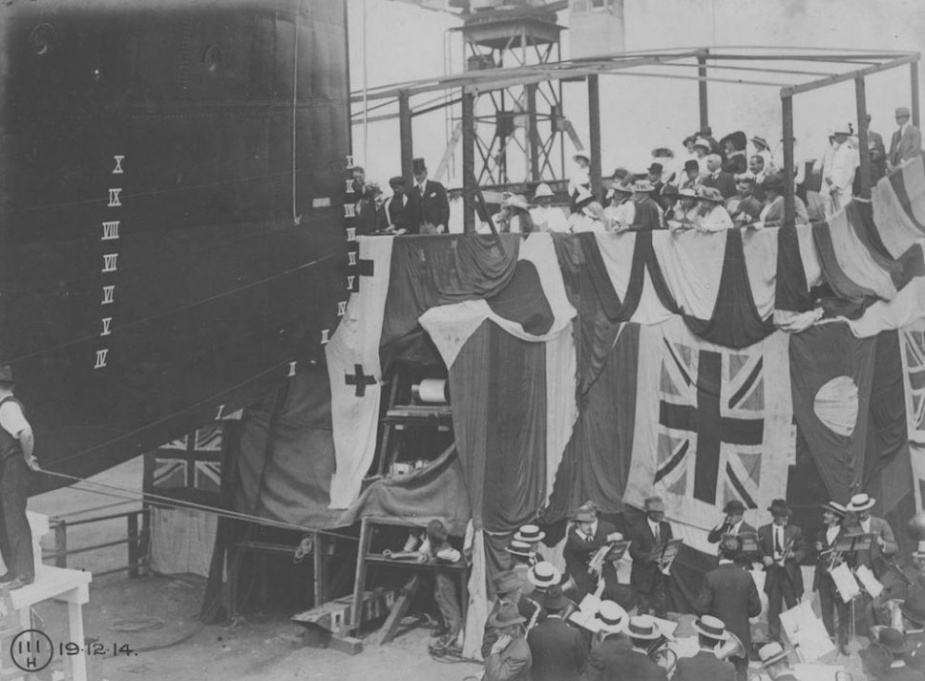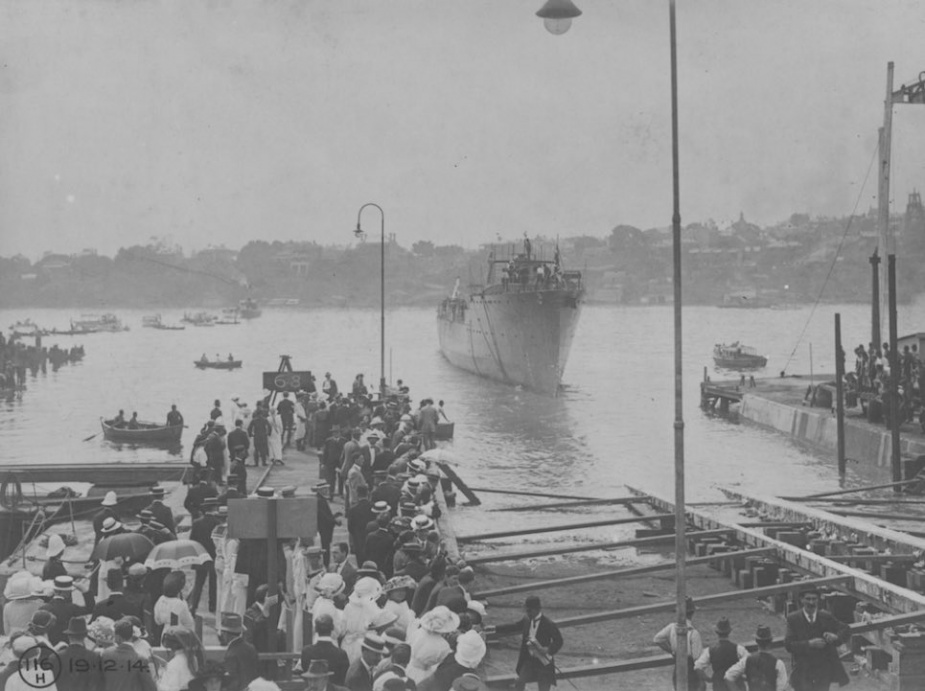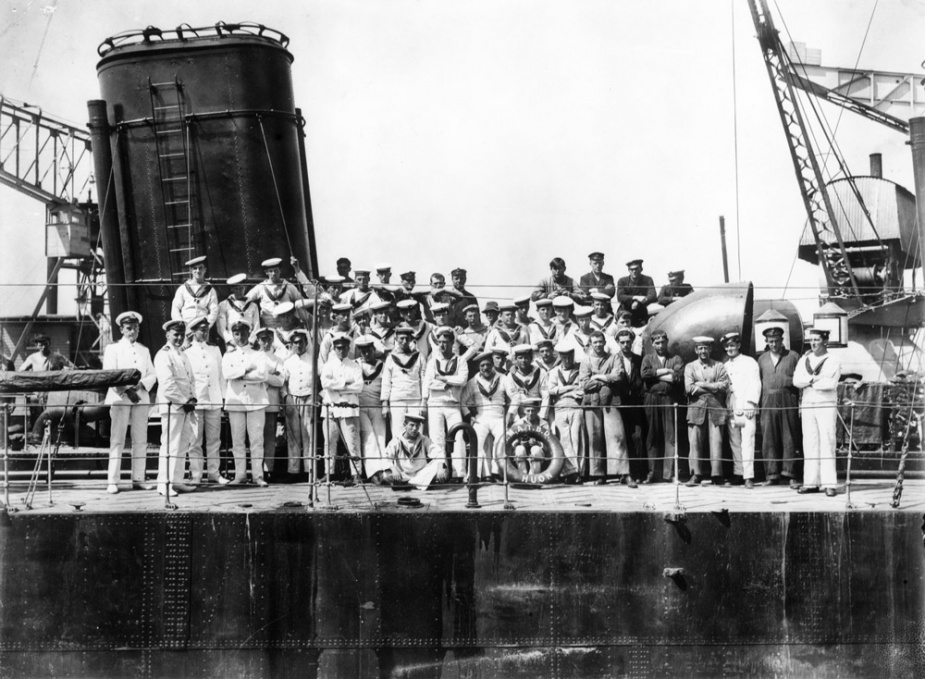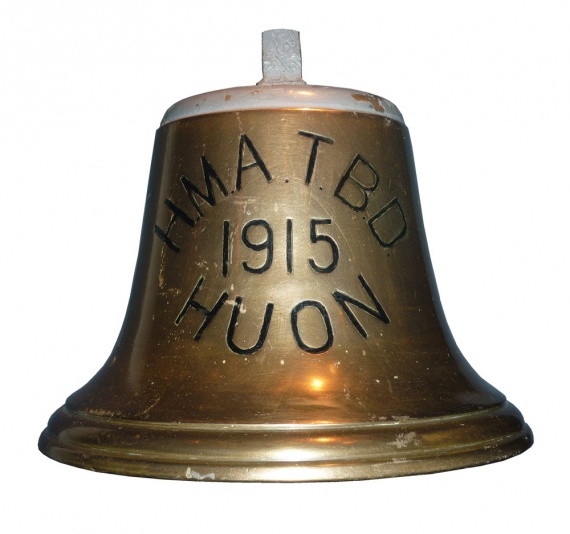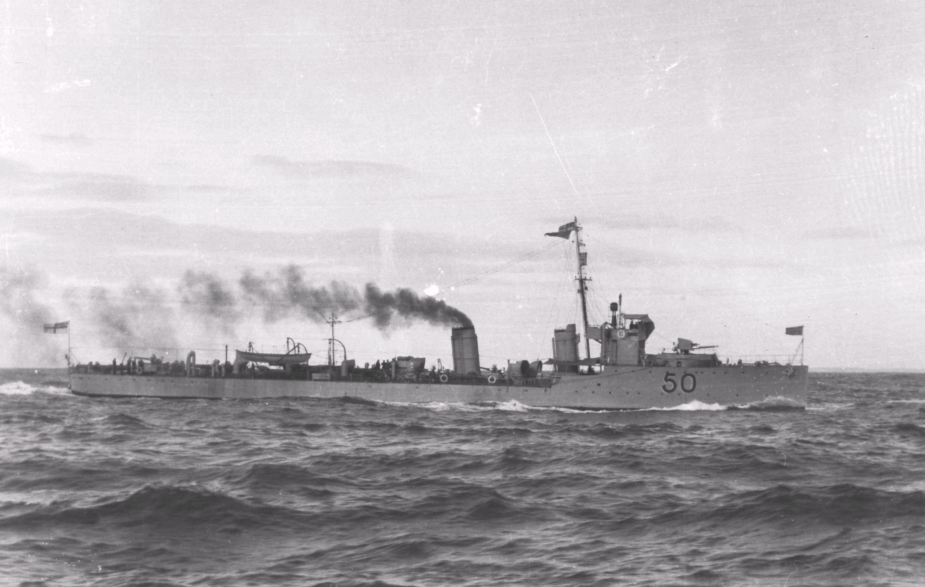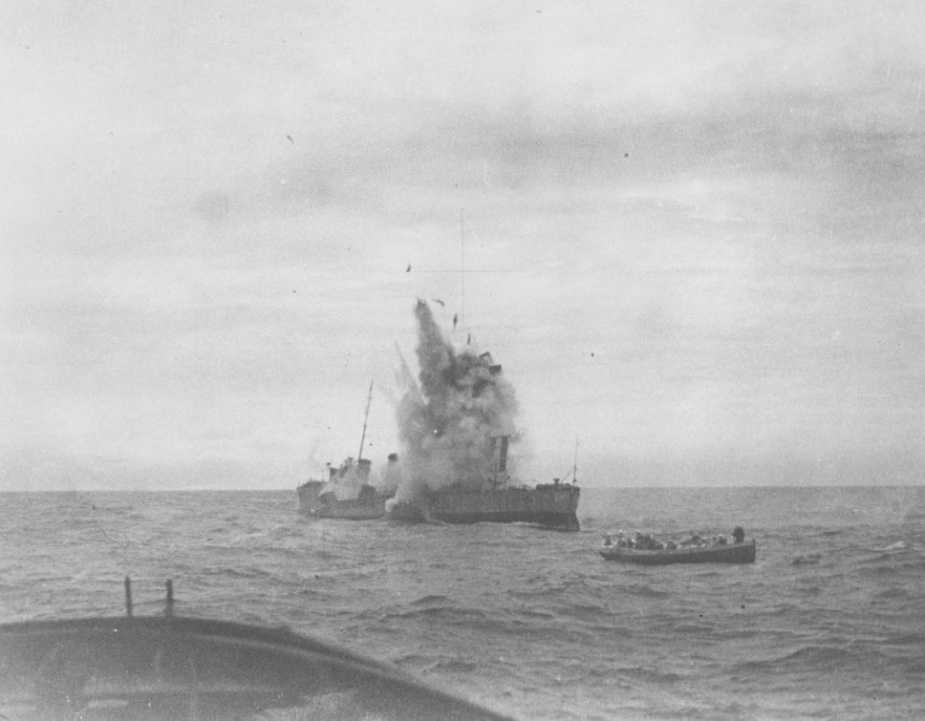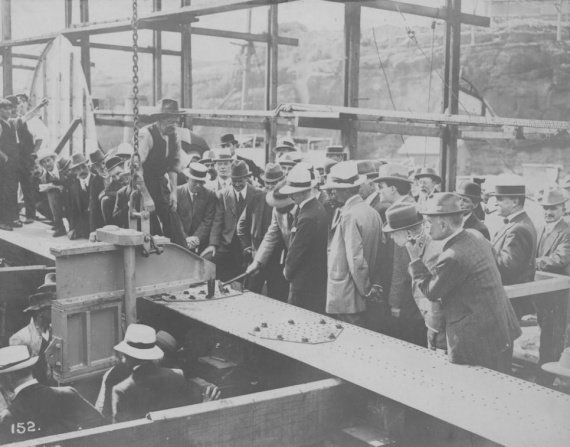
HMAS Huon was one of six River Class Torpedo Boat Destroyers built for the Royal Australian Navy during the period 1909-1916. During World War I they formed the Australian Destroyer Flotilla. Sister ships were HMA Ships Parramatta, Swan, Torrens, Warrego and Yarra.
Huon was laid down and launched as Derwent but because at the time of her completion there was a vessel of that name in commission in the Royal Navy, she was renamed shortly before commissioning.
Huon commissioned at Sydney on 14 December 1915 but did not complete until 2 February 1916. After working up in Australian waters she departed Sydney on 19 June 1916 to enter service as a unit of the British Far East Patrol, arriving at Sandakan, Borneo, on 24 July 1916. She at once proceeded on patrol along the northern coast of Celebes. Huon was joined in the Malayan Archipelago in September 1916 by Swan and Torrens.
Based firstly on Sandakan and later on Singapore, Huon, Swan and Torrens patrolled in the Philippines-Celebes-Malaya area until May 1917. The historian Jose called the almost constant patrolling "valuable drudgery under tropical conditions".
The threat presented by the German submarine campaign of 1917 led to the transfer of the Australian Flotilla to the Mediterranean at the request of the British Government. Following a refit in June, Huon left Singapore for Europe on 2 July 1917 with Swan and Torrens in company. On 7 July the three destroyers joined their sister ships Parramatta (Flotilla Leader), Warrego and Yarra at Cocos Island. The latter three ships had arrived from Australia.
From Cocos Island the Flotilla proceeded to Diego Garcia where they searched the archipelago for survivors of two British freighters (Jumna and Wordsworth) which had disappeared without trace in March 1917. These two ships had actually been captured and sunk by the German raider SMS Wolf. No trace of the ships was found and the destroyers continued their voyage to the Mediterranean arriving at Port Said on 9 August 1917.
Following refits at Malta and combined anti-submarine exercises the Australian Flotilla was based in October 1917 on Brindisi and assigned the task of maintaining patrols in the Straits of Otranto. The purpose of the patrol was to prevent the passage into the Mediterranean of enemy submarines based on Austrian Adriatic ports. Operating in two divisions (Huon, Swan, Torrens and Parramatta, Warrego, Yarra), the ships maintained patrols on the basis of four days at sea and four in harbour.
Joined first by a French flotilla and later by Royal Navy destroyers, the Australian ships eventually became part of an anti-submarine force of over two hundred vessels.
During the early period of their service, the enemy, whose submarines were based on Pola at the head of the Adriatic, was fairly active and detection and hunting was a common occurrence. Later, however, the enemy effort diminished and eventually the patrol became "routine uneventful steaming". Huon, Parramatta and Yarra were fitted with captive observer balloons from which a submarine could be more easily detected while another destroyer stood by ready to act as "killer". In January 1918 Huon and Warrego carried the Greek Prime Minister (Mr EK Venizelos) and his staff from Taranto to Athens on his return from a conference of the Allies in London.
In April 1918 the Australian ships became part of the British 5th Destroyer Flotilla. On 8 August 1918 Yarra collided with Huon and as a result both ships were docked for repairs. Huon arrived at Genoa on 19 August and did not leave the dock until 10 November 1918, one day before the Armistice was signed. Sadly while in Genoa the Spanish influenza pandemic, then sweeping through western Europe, struck the ship and five members of the ship"s company succumbed to the disease. They were Stoker James Colton (died 21 October), Stoker Ernest Browne (died 22 October), his brother Stoker Reginald Browne (died 26 October), Leading Stoker Henry Leedham (died 26 October) and Lieutenant Claude Herbert, RAN (6 November).
In December Huon joined Parramatta, Swan and Yarra at Izmir and she steamed through the Dardanelles on 3 December 1918 to the Sea of Marmara. Huon served briefly in the Black Sea visiting Sebastopol and Thedoesia as part of the Royal Navy"s show of force in the region. She also towed a captured German U-boat, UC 37, from Sebastopol to Izmir during 11-15 December. On 26 December Huon, Parramatta, Swan and Yarra sailed for Malta where they were joined by Torrens (Warrego joined them later at Gibraltar).
The flotilla sailed for Plymouth on 3 January 1919. En route the vessels ran into a storm off Cape Finisterre lasting four days during which Huon and Parramatta received such damage that they were forced to put into the Spanish port of Ferrol. They reached Plymouth on 14 January and commenced a period of maintenance prior to their return to Australia.
After many delays, the six destroyers assembled at Malta and in company with the cruiser HMAS Melbourne sailed for Australia on 17 March 1919. Following port visits to Port Said, Aden, Colombo, Malacca, Singapore, Darwin, Thursday Island and Brisbane Huon entered Sydney Harbour on 21 May 1919. After a few days in port she steamed south to Williamstown Naval Depot where she arrived on 26 May 1919 and her war weary ship"s company sent on long leave until early July.
The remainder of Huon"s seagoing service was confined to Australian waters. In October-November 1919 she took part in a Fleet "Spring Cruise" in Queensland waters and in January-February 1920 proceeded with the Fleet on a "Summer Cruise" to Tasmania. Huon was one of the 26 ships and six submarines of the RAN assembled at Melbourne for the arrival on 26 May 1920 of the Prince of Wales in HMS Renown. In July she was one of the escorts of Renown for the visit of the Prince to South Australia. She returned to Sydney on 25 July 1920 and on 9 August 1920 paid off into Reserve at Sydney. On 22 April 1921 Huon recommissioned and served in Australian waters until 2 June 1922, when she again paid off into Reserve at Sydney.
From 22 September 1924 to 26 May 1928 Huon was based at Hobart for Naval Reserve training, during which period she visited Melbourne and Geelong on a few occasions. On 28 May 1928 Huon returned to Sydney and finally paid off into Reserve on 7 June 1928.
Without being again brought back into service, Huon was sunk by gunfire as a target off Sydney on 10 April 1931.
Specifications
 |
| Class |
River Class |
|---|---|
| Type |
Torpedo Boat Destroyer |
| Pennant |
D50 |
| Builder |
Commonwealth Naval Dockyard, Cockatoo Island, Sydney |
| Laid Down |
25 January 1913 |
| Launched |
19 December 1914 |
| Launched by |
Mrs Jensen, wife of the Honourable JA Jensen, Minister without Portfolio |
| Commissioned |
14 December 1915 |
| Decommissioned |
7 June 1928 |
| Dimensions & Displacement | |
| Displacement | 700 tons |
| Length | 250 feet 9 inches (overall) |
| Beam | 24 feet 3 inches |
| Draught | 8 feet |
| Performance | |
| Speed | 26 knots |
| Complement | |
| Crew | 69 |
| Propulsion | |
| Machinery | Parsons Turbines |
| Horsepower | 72,000 |
| Armament | |
| Guns |
|
| Torpedoes | 3 x 18-inch torpedo tubes |
| Awards | |
| Battle Honours |
|

